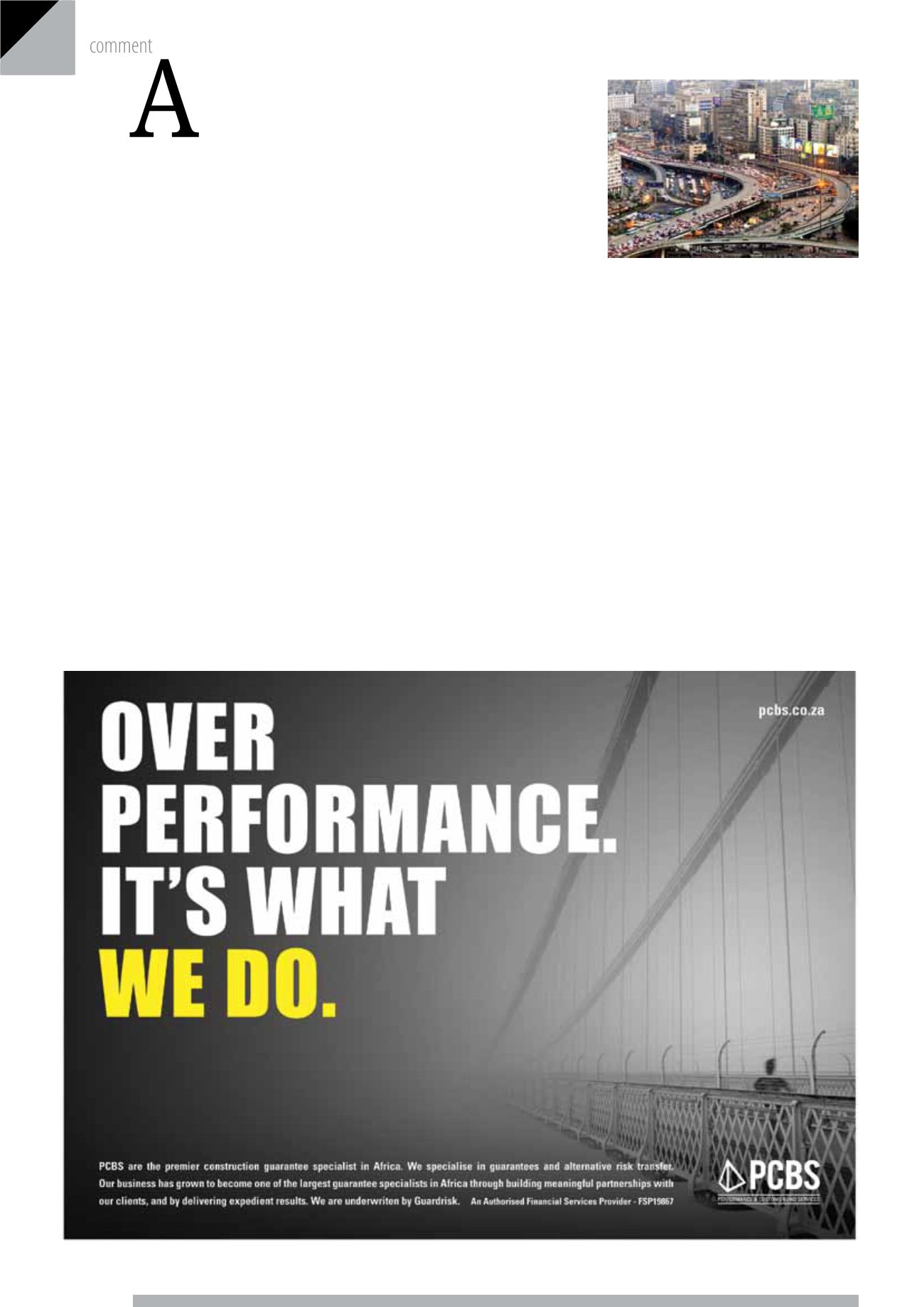
June 2013
CONSTRUCTION WORLD
2
frica’s opportunities
During the last few years many South African construction companies
have indicated that they are moving ‘cross border’ into Africa. What
exactly makes the case for investing in construction on the continent
so strong? A recent report by Deloitte, ‘Construction on the African
Continent: Opportunities, Risks and Trends’explores these factors.
Urbanisation
In 2010 Africa had 51 cities with more than a million people and one,
Cairo, with more than 10 million people. By 2040, 100 African cities
will have more than one million people and seven cities will have in
excess of 10 million people. According to projection, Kinshasa will be
the largest, with 24 million people. In an effort to curb the pressures
that is already felt with extremely rapid urbanisation, entire new cities
are being developed – cities in Kenya, Ghana andNigeria are examples.
Add to this that mortgages are becoming more easily available and
the need for housing developments escalate.
Strong growth leads to shortage of office space
As more businesses access the African opportunities and set up local
operations, the need for highquality offices escalates. Rentals in Luanda
(due the oil and gas industry) are sky high –making it the secondmost
expensive city in the world for expatriates, the most expensive being
Tokyo. Lagos is 39
th
on this list. Perceived expensive cities are far less
expensive: Paris at 37, Stockholm at 46 and Vienna at 48.
Rising middle class
In 1980, some 111 million people (26% of Africa’s total population) fell
into this category. In 1990 this rose to 151,4million (27%of the popula-
tion) and in 2000 it was 313 million (34,3% of the population). This has
a direct bearing on consumer businesses – specifically retail (food and
clothing). According to the report there is currently an explosion of
Cairo is currently
Africa’s biggest city
... but not for ever.
Kinshasa will over-
take it by 2040.
such businesses moving into the continent which leads to a massive
need for retail infrastructure.
Regional integration and cross-border
infrastructure projects
Africa consists of 54 countries – most of these are small with popu-
lations often less than 20 million. Unfortunately the infrastructure
systems and borders of many countries are reflections of the colonial
past – roads, ports, railroads etc. were built for the sole purpose
of extracting resources and not with binding territories together.
A regional infrastructurewill make it possible to form large, competitive
markets as opposed to the many existing small and inefficient ones.
Initiatives to achieve this such as the North-South Corridor and the
Southern African Development Community hold massive potential
for public-private partnerships and various infrastructure projects.
Unfortunately Africa’s massive opportunity comes withmany risks
and challenges. The major ones include: accessing funding; the lack
of alignment between national and regional legislative frameworks;
construction costs that are high due to the non-availability of building
materials and lastly the fact that, for themost part, Africa’smiddle class
remains a largely cash society.
WILHEM DU PLESSIS
EDITOR


